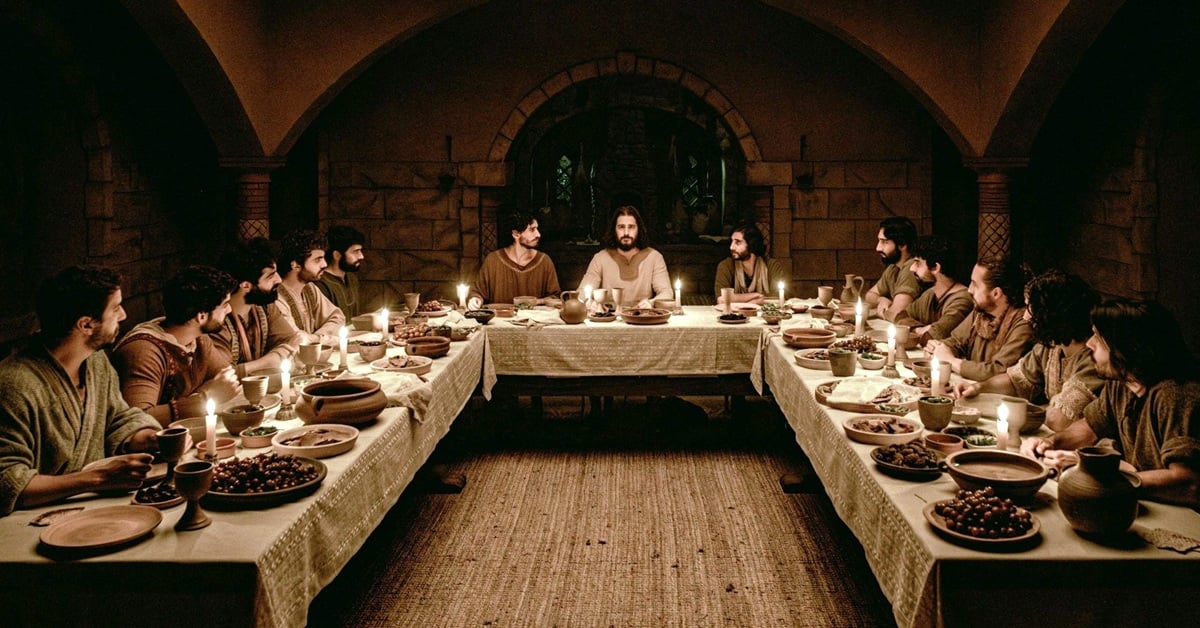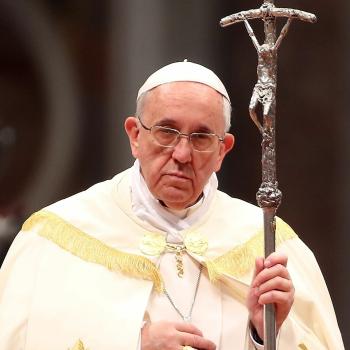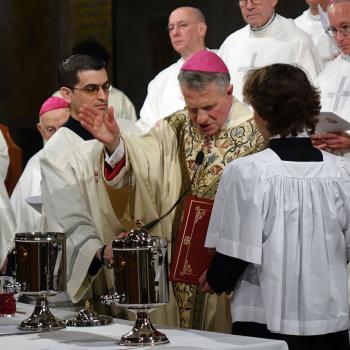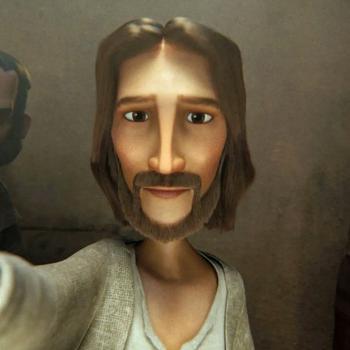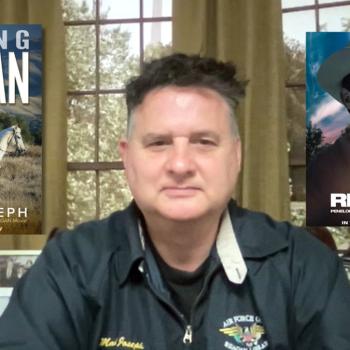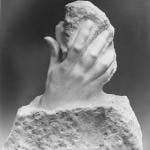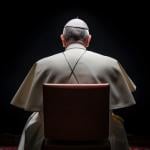If you plan to see The Chosen: The Last Supper, season 5 of the hit series, currently in theaters, and you’re not familiar with the events of Holy Week, this post may be spoilery. Everyone else, fear not.
All episodes of the series are currently available in select theaters through April 20, Easter Sunday.
Definitely Not Boring
When I saw season 4 in theaters last year — which ended just before Jesus’ (Jonathan Roumie) big entrance into Jerusalem on Palm Sunday — at least one of the installments was a major slog, a real theatrical butt-numb-a-thon.
While I can’t help fidgeting my way through the back half of any 2-3-hour film experience that doesn’t at least offer an intermission, this time around, I was never bored.
That’s especially true of today’s 3-hour and 5-minute showing of the last three episodes of season 5, which culminates with the Garden of Gethsemane. I haven’t written yet about season 5, because I wanted to see the whole thing first.
Mostly, I wanted to see how the show handled the part of the Last Supper that Catholics consider as the institution of the Eucharist.
The Bread of Life Discourse Was Missing From Last Season
As I outlined in detail in a post from last season, the Bread of Life Discourse from John 6:22-69 was almost entirely eliminated from season 4 (where, in the Gospel timeline, it should have occurred). A couple of lines from it were retained but put in other places in the story.
As a reminder, this is part of what Jesus says in the Discourse:
Jesus said to them, “Amen, amen, I say to you, unless you eat the flesh of the Son of Man and drink his blood, you do not have life within you. Whoever eats my flesh and drinks my blood has eternal life, and I will raise him on the last day. For my flesh is true food, and my blood is true drink.
“Whoever eats my flesh and drinks my blood remains in me and I in him. Just as the living Father sent me and I have life because of the Father, so also the one who feeds on me will have life because of me. This is the bread that came down from heaven. Unlike your ancestors who ate and still died, whoever eats this bread will live forever.”
We may never know exactly what the reaction of Roumie, a serious Catholic, was upon realizing this would not be in the script (along with the Transfiguration, BTW).
But we do know he stood before the National Eucharistic Congress last summer and recited the entire Discourse, in his Jesus accent … and then he started selling the t-shirt he wore, bearing a quote from Flannery O’Connor about the Eucharist.
And, as I said in that earlier post:
Obviously, Catholics, and Orthodox, disagree with other Christians on whether the bread and wine truly become the Body, Blood, Soul and Divinity of Christ (transubstantiation), or if they just coexist with the essence of Christ (consubstantiation), or whether they are merely symbolic.
To us, the Bread of Life Discourse explains the idea behind transubstantiation, while the Last Supper is the practice — how we are to express this idea in reality. The actual, physical sacrifice of Christ happened on Calvary, and then, in a mystical way, it happens again, in an unbloody manner, during the Consecration at every Mass.
We then consume the now-consecrated and transubstantiated bread (and/or the wine, as each is sufficient unto itself), as Jesus demonstrated at the Last Supper.
How Is the Communion Portion of the Last Supper Handled?
Season 5 teases bits of the Last Supper, out of order, in each episode. Episode 6, the one that opens Part 3 of the theatrical presentation, starts right at the point in the meal where Jesus breaks the bread and passes it to the Apostles, and then drinks wine, and passes it on.
I won’t go into detail about the whole scene, but Jesus does say, about the bread, “Take and eat it. This is my body, which is given for you. Do this in remembrance of me.”
Then, He drinks the wine and says, “This is my blood, of the new covenant, shed for you and for many, for the forgiveness of sins. Drink it, all of you, in remembrance of me.”
All this will sound very familiar to anyone who’s attended the Liturgy of the Eucharist at a Catholic Mass, in the Gospels-inspired prayers just before Communion.
But, what does it all mean? As I said above, the Bread of Life Discourse is pretty explicit about what Christ means by “This is my body,” and “This is my blood.” He’s not speaking in symbolic language at all. This may have been why it was almost entirely left out.
But, that’s just my supposition.
However, without the theory, the practice is left more up to interpretation. Catholics and Orthodox will see it as the first instance of transubstantiation, which continues today at every Mass. Various Protestant denominations will see it in a variety of other ways, with most considering Communion — or “the Lord’s Supper” — to be merely symbolic.
The Chosen Poses Some Tricky Storytelling Challenges
Series creator, co-writer and director Dallas Jenkins, and fellow writers Ryan Swanson and Tyler Thompson, set themselves a hard task in negotiating among how different Christian groups interpret the Gospels. Some parts of Matthew, Mark, Luke and John are less controversial, while others — especially parts of John — are cause for enduring disagreement.
This treatment of the Discourse and the Last Supper may have been another instance of Jenkins and his collaborators sidestepping the most thorny disputes in order to appeal to the broadest swath of believers.
While last season’s omissions were annoying, I can understand various reasons why they happened. But, in these episodes, all the major events and concepts of the first part of Holy Week are here, from Palm Sunday through Holy Thursday.
The episodes also posit, not a new, but an interesting, motive for Judas’ (Luke Dimyan) betrayal, largely rooted in the show’s portrayal of the character. There are a lot of other character moments, as the Apostles wrestle with a future each fears to face or understand.
There are some huge emotions going on in Season 5, and a truly bravura performance from Roumie, especially at the Last Supper and in the Garden of Gethsemane. One can just imagine what he’ll do in seasons six and seven, which cover the Crucifixion, and the Resurrection, respectively.
I’ll stop here, because the Season 5 episodes don’t land on Prime Video until June, and then on The Chosen App in the fall — and a lot of fans won’t see them until then.
Give That Man — and That Show — an Award
I don’t know if The Chosen being shown in theaters qualifies Roumie for Oscar consideration, but dang, the man deserves at least an Emmy nomination. He’s been crushing one of the most difficult parts imaginable since the beginning, and this season is at a whole other level.
I know Roumie a bit, as we went to the same parish in Los Angeles and know folks in common. I’ve interacted with him at various events and done some interviews. It’s truly heartwarming to see a journeyman actor get the role of his life — at the lowest point in his life — and then knock it out of the park.
Well done, Jon.
Also, in my decades of entertainment journalism, I have watched far more TV than any sane human should, whether good, bad, or in-between.
While the acting in The Chosen has always been good — although, honestly, Reza Diako isn’t the quite up to the standard set by predecessor Yoshi Barrigas as Philip — the last couple of seasons have looked gorgeous (bigger budgets from more stable funding definitely helped).
In an era where even a lot of feature films can look flat, The Chosen‘s use of lighting and cinematography, the costumes and sets (with the exception of the craft-store flora in Phoebe’s courtyard — IYKYK), have been top-notch.
It’s not quite FX’s Shogun (indeed, what is?), but it’s darn good.
And, I’ll say it again, wherever Jenkins, Swanson and Thompson learned how to do TV, they know what they’re doing.
Unlike many current TV shows (cough cough, Disney+, cough cough The Lord of the Rings: The Rings of Power), which are structured more as long movies awkwardly cut into chunks, each episode of The Chosen has a proper theme, structure and story arc, while propelling the entire narrative forward.
That’s what you see in quality TV dramas, from Hill Street Blues to The Wire to Deadwood to even Yellowstone.
So, come on TV (or movie) Academy, find a way to reward The Chosen. It’s earned the acclaim.
Image: Season 5 Key Art/The Chosen
Don’t miss a thing: Subscribe to all that I write at Authory.com/KateOHare.


